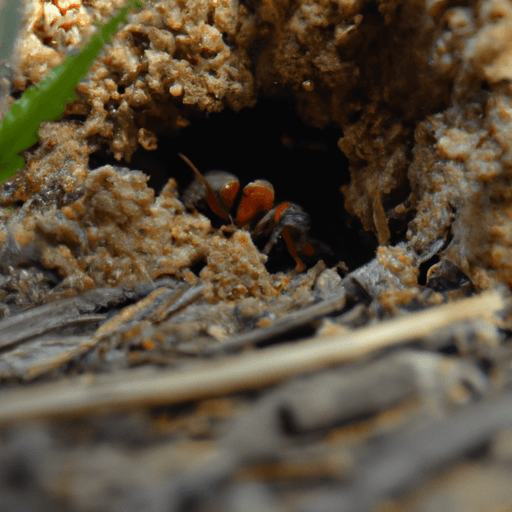| Complexity level: | 6 |
| Project cost ($): | 15 |
| Time required: | 1 hour to prepare, 10 days for observation |
| Material availability: | Ants may be found in parks/gardens. Radish seeds may be purchased at a gardening supplies store/supermarket. |
| Safety concerns: | Be careful when handling the ants. They bite! Wear protective gloves. Adult supervision recommended. |
Hypothesis
The presence of ants in soil will help plants grow better and faster.
Overview
Soil fertility
As plants grow, they consume nutrients in the soil. As the mineral content depletes in the soil, they need to be replenished. This is where the organisms living in the soil play their part by helping in the decomposition and transportation of nutrients to be used by plants.
Ants make their nests in soil. The ant’s food and manure are also deposited in the soil. The burrowing activity of the ants helps to till the soil, provides better aeration, makes the soil more porous, improves the moisture content and helps in the transfer of organic materials into the soil.
The ants play an important role in the basic nutrient cycle of the soil. Plant residues, animal manure or other organic materials are decomposed by bacteria, fungi and other similar organisms into much simpler forms. These organic matters are carried by the ants into the soil where they are further "reduced" before being absorbed by the plants as nutrients.
Scientific Terms
Materials
The materials required for this science fair project:
- 1 packet of radish seed
- 2 plastic pots, with dish bases, deep enough to be filled with water
- enough soil to fill 2 pots
- 50 black ants (you can find them in your garden or a park)
- Water
- 1 tray
- Ruler (1 meter)
Procedure
1. For this experiment, the independent variable is the ants in the soil. The dependent variable is the rate of growth of the plants. This is determined by measuring the height of the 5 plants in each group and calculating the average. The constants (control variables) are the size of the pot, the amount of soil, the number of ants and the type of plant used.
2. 2 pots are filled with the same amount of soil. The pots are labeled pot A and pot B. 5 radish seeds are placed in each pot. (More than 5 seeds can be used in each pot in case some of the seeds do not germinate. Once they start to geminate, remove the unwanted plants from the pot).
3. 50 black ants are placed in the soil of pot B. The pot labeled B is placed on a tray. Water is filled in the tray. The water in the tray is to prevent the ants from leaving the soil.
4. Both the pots are placed in a place where there is adequate sunlight and air ventilation for the radish seeds to germinate. Ensure that the pots are placed in large pot dishes, filled with water to prevent the ants from escaping.
5. The radish plants are watered daily in the morning and evening. Their height is measured everyday using a ruler and recorded in the table below.
6. The experiment is continued for 10 days and the measured height of the radish plants is recorded in the table below.
Results
It is observed that the radish plants in pot B had grown taller than the radish plants in pot A. The presence of the ants in pot B has helped to provide a better environment for the radish seeds to germinate and grow faster.
Pot |
Plants |
Height of the plant measured after 2 weeks (mm) |
Average (mm) |
||
1 |
2 |
3 |
|||
A |
Pot Tomato |
48 |
42 |
54 |
48 |
B |
Onion |
15 |
21 |
18 |
18 |
C |
Corn |
24 |
32 |
28 |
28 |
D |
Tomato Onion |
62 |
68 |
65 |
65 |
32 |
38 |
29 |
33 |
||
E |
Tomato Corn |
24 |
28 |
32 |
28 |
12 |
14 |
16 |
14 |
The graph below represents the results of our science project experiment.

Conclusion
The hypothesis that the presence of ants in the soil will help plants to grow faster is proven to be true.
Ants help to fertilize the soil in many ways. They help in the recycling of decomposed materials. Some of the ants eat the other insects and caterpillars that are harmful to the plants and will help nourish the soil with their processed food. Ants also keep wasps away. Their burrowing activity helps air and water get to the plants’ roots faster. The ants also help in spreading the plants’ seeds.
Also consider
What would happen if the experiment was repeated using more ants?
The experiment can be repeated using earthworms instead of ants. I would also consider repeating the experiment with a variety of other plants, or perhaps more plants, to obtain more accurate/reliable results.
References
Soils life - http://en.wikipedia.org/wiki/Soil_life
Effect of ants and earthworm on soil habitat modification - http://www.jstor.org/pss/20112621

